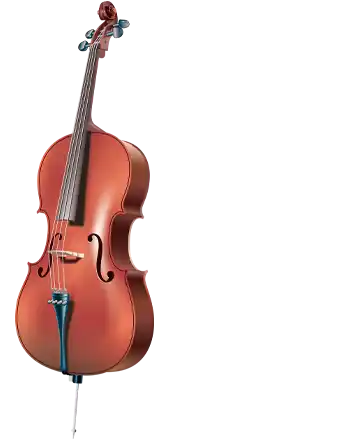Celebrating the Soulful Strings That Resonate Through Time
Every December 29th, the world strikes a chord—a cello chord, to be precise—to celebrate International Cello Day. This day honors the majestic stringed instrument that has serenaded hearts and accompanied orchestras for centuries. It also commemorates the birthday of Pablo Casals, one of the most influential cellists in history, who showed the world just how expressive and versatile the cello could be.
A Brief History of the Cello
The cello, or violoncello if you’re feeling fancy, emerged in the 16th century as part of the violin family. Its origins can be traced to Northern Italy, where craftsmen like Andrea Amati began developing stringed instruments that would evolve into the cello we know today. Early versions of the cello were larger and more cumbersome, often requiring players to stand while performing. Over time, the design was refined, resulting in a more manageable size and the addition of the endpin for support.
By the Baroque period, the cello had secured its role as the bass voice in string ensembles, providing harmonic foundation and depth. Composers like Antonio Vivaldi and Johann Sebastian Bach began to recognize the instrument's melodic potential, with Bach’s Cello Suites standing as some of the most iconic solo works ever written. The cello’s prominence continued to grow during the Classical and Romantic periods, with composers like Haydn, Beethoven, and Dvořák composing concertos that showcased its expressive range.
In the 20th century, the cello’s versatility expanded even further. Pablo Casals, widely credited with bringing the cello into the spotlight as a solo instrument, inspired generations of musicians. Innovations in playing techniques and compositions opened the door for the cello to cross genres, appearing in jazz, rock, and even electronic music. Today, the cello continues to evolve, blending its rich heritage with contemporary sounds and styles.
Why the Cello Deserves a Day
If instruments were ranked by their ability to evoke human emotion, the cello would be the undisputed champion. Its range spans nearly four octaves, from the deep, somber notes of the bass to the soaring, lyrical highs of the tenor. It’s like the Swiss Army knife of string instruments, capable of playing everything from a mournful elegy to a fiery tango.
The cello is also uniquely relatable. Unlike the violin, which often feels like a high-strung overachiever, or the double bass, which lurks in the background like a mysterious introvert, the cello has a warm, inviting presence. It’s the friend who always knows exactly what to say—or play—to make you feel better.
 Celebrating International Cello Day
Celebrating International Cello Day
Celebrating International Cello Day is a perfect opportunity to immerse yourself in the rich, resonant world of the cello while exploring its cultural and emotional impact. How can you honor this magnificent instrument? Here are some fun and creative ideas:
- Attend a Cello Concert: Whether it’s a solo recital, a chamber ensemble, or a full-blown orchestra, live cello music is an experience like no other.
- Binge on Cello Performances Online: From Yo-Yo Ma’s soulful interpretations to 2CELLOS rocking out to AC/DC, there’s no shortage of captivating performances to explore.
- Try Playing One: Many music stores offer rental programs for beginners. Warning: mastering the cello takes time, so don’t be discouraged if your first attempt sounds more like a moose than music.
- Share Your Love on Social Media: Post your favorite cello pieces, performances, or memes with the hashtag #InternationalCelloDay. Bonus points if you can find a pun—because, let’s face it, cellists are a very stringent bunch.
Fun Facts About the Cello
The cello is more than just an instrument; it’s a treasure trove of fascinating history, quirky details, and delightful trivia. Whether you’re a seasoned cellist or simply a curious enthusiast, these fun facts will deepen your appreciation for this remarkable instrument.
- The cello’s full name, violoncello, means “small large viola” in Italian. It’s a linguistic paradox worthy of its own symphony.
- The endpin, the spike at the bottom of the cello, was only added in the 19th century. Before that, cellists held the instrument between their knees, which probably led to some very awkward performances.
- The strings of early cellos were made from sheep gut, which gave the instrument a rich, organic sound. Thankfully for modern players, today’s strings are more durable and less, well, smelly.
- Some cellos have survived for centuries and are still played today. For example, the “Davidoff” Stradivarius cello, crafted in 1712, remains one of the most coveted instruments in the world.
- The world’s largest playable cello measures over 13 feet long and requires two musicians: one to bow and one to finger the strings. Talk about teamwork!
- Yo-Yo Ma’s cello, crafted by Domenico Montagnana in 1733, is nicknamed “Petunia” and is valued at over $2.5 million.
- Pablo Casals discovered Bach’s six Cello Suites in a second-hand music shop as a teenager. These suites are now considered some of the greatest works ever written for the instrument.
The Cello in Pop Culture
The cello has made some memorable appearances outside of the concert hall, cementing its status as a cultural icon. Its rich, emotive sound and striking presence make it a favorite for filmmakers, television producers, and even video game designers. It’s been featured in movies like If I Stay, where the protagonist's connection to the cello symbolizes her emotional journey, and The Soloist, which highlights the transformative power of music.
In TV shows like The Simpsons and Modern Family, the cello often appears as a humorous nod to sophistication and musical dedication. Who could forget the iconic cello duel in August Rush, where two musicians turn the instrument into a tool for dynamic, almost combative expression?
The cello has also carved out a niche in the music industry beyond classical genres. Artists like Apocalyptica have taken the cello to new heights by reinterpreting heavy metal classics, proving that the instrument can shred just as hard as an electric guitar. In pop culture, the cello’s adaptability has also been showcased by acts like 2CELLOS, who have brought a modern flair to the instrument with covers of songs by artists ranging from Michael Jackson to Nirvana.
Even video games have embraced the cello. In the popular game series The Elder Scrolls, the cello’s haunting tones add depth and drama to the immersive soundtracks. Similarly, in movie soundtracks such as Schindler’s List and The Lord of the Rings, the cello’s deep, resonant sound evokes profound emotion, solidifying its role as a storyteller in its own right.
The cello’s influence doesn’t stop there. Its image is frequently used in advertising to convey elegance and refinement. Whether on stage or screen, in the concert hall or in a video game, the cello continues to captivate audiences, reminding us why it holds such a special place in both music and pop culture.
International Cello Day is more than just an excuse to celebrate a beautiful instrument; it’s a reminder of the power of music to connect, heal, and inspire. So whether you’re a seasoned cellist or a casual listener, take a moment today to appreciate the cello. Who knows? You might even be inspired to pick up a bow and join the ranks of those who make the world a more harmonious place.
Please Share our Content






 Celebrating International Cello Day
Celebrating International Cello Day








 "Sláinte!" is a traditional Irish expression used as a toast, equivalent to "Cheers!" in English.
"Sláinte!" is a traditional Irish expression used as a toast, equivalent to "Cheers!" in English.